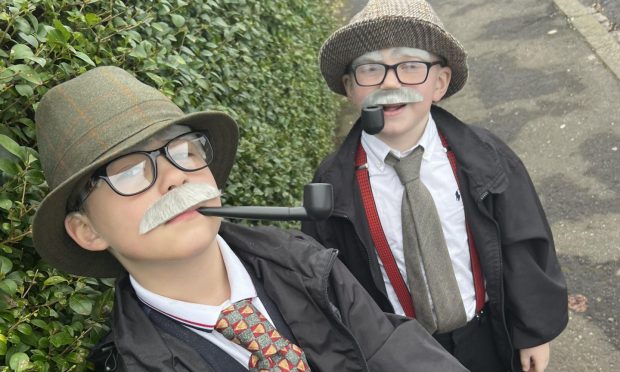A Monifieth High School teacher is hoping to encourage more state school pupils to take an interest in Classics after launching a unique online resource.
George Connor, who teaches English at the Angus school, has set up a website which he hopes will help the subject flourish in Scotland after years of decline.
Called Working Classicists, the site was inspired by the enthusiasm shown by Monifieth pupils who have been given the opportunity to study the subject in recent years.
It aims to provide a hub which people can use to easily access information and opportunities in the subject.
George said: “In my mid to late 30s I actually went back to school to do Higher Latin and Classical Studies and then went on to do a degree.
How did you get into the ancient world, and what do you love about it? Use the hashtag #workingclassicists and tell us your story!
— Working Classicists (@WorkClassicists) July 10, 2021
“Over the course of that time, Monifieth High took a very liberal view and allowed me to introduce the subject into the school.
“We started off by just teaching a handful of pupils and we moved on to teaching more than 100 one year.
“What struck us was the enthusiasm of the pupils and the longer I taught it, the more I interacted with other schools.”
What is Classics?
In the UK, Classics is often used as an umbrella term that can refer to Latin, Classical Greek, Classical Civilisation and Ancient History.
And it’s the broad skillset that can come with learning these topics that George argues is the obvious benefit of encouraging more pupils into studying them.
George said: “The skillset that is taught is so enormous. You have literature, languages, history, religion. There’s so much you can take away from it.
“Classics help people develop analytical and philosophical skills but more importantly, basic empathy.”
Subject on the decline
Despite the benefits that come from the subject, the study of classics has largely declined in state schools in recent decades.
An FOI request submitted to the Scottish Government by George shows that the number of state school pupils sitting Higher Latin has fallen from 110 in 2015 to less than 80 last year.
The figures also showed that although just 4% of pupils in Scotland are privately educated, more than 60% of those who study Classics at university are from fee-paying schools.
It’s these figures that George hopes his website can help change and the long term aim of the project is to spark enthusiasm in young people so the subject can flourish once more.
George said: “The facts speak for themselves; the state sector needs a bit of help in re-establishing the subject.
“The numbers are really alarming. Even if we factor in the number of nuanced reasons behind that, it’s still highly disproportionate.
“The longterm goal is to create a community. Fingers crossed on the back this, we will have more teachers go to their line manager and say I fancy doing a small class on this.”











